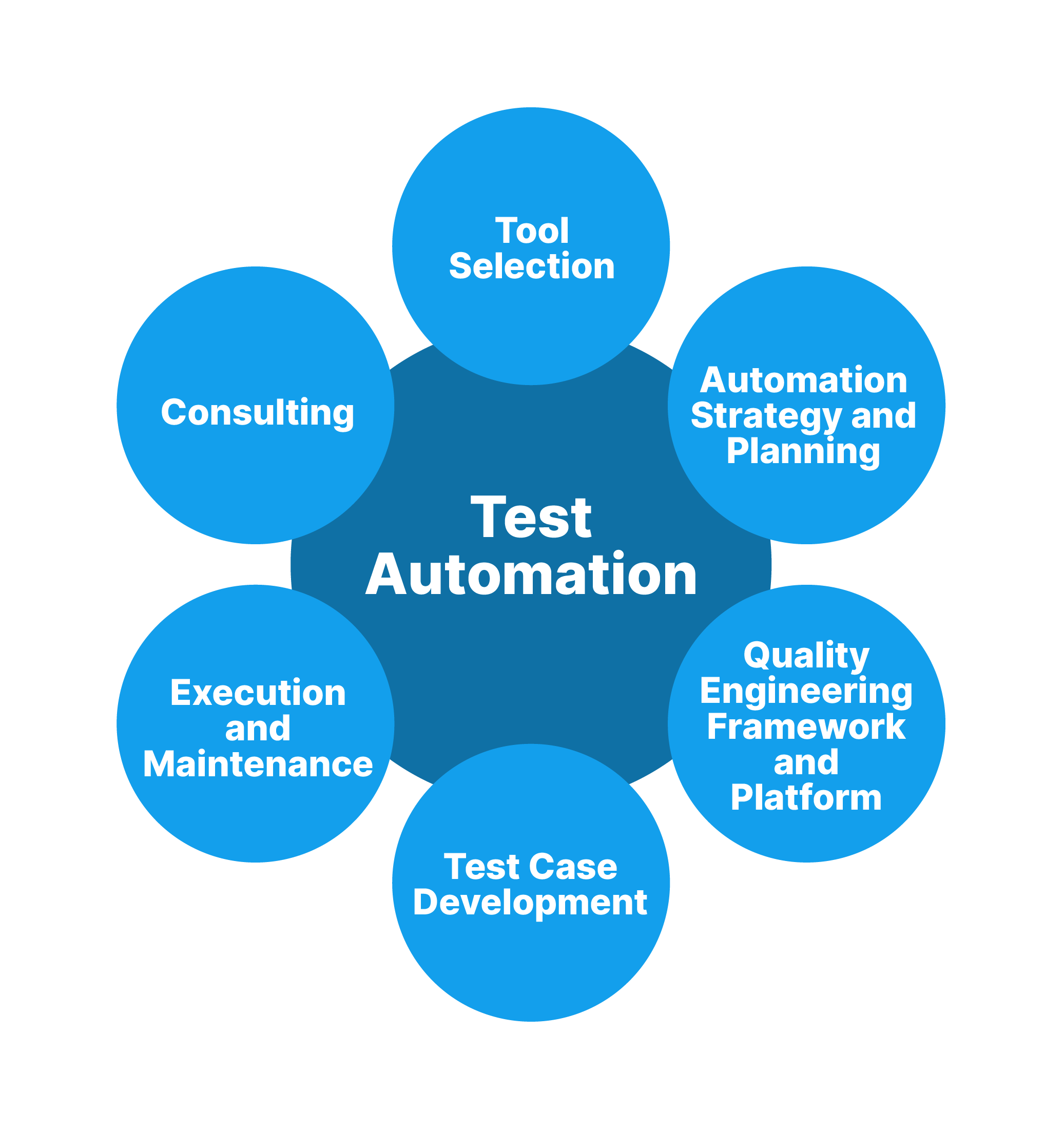Grasping Automation Testing: Tools, Methods, and Benefits
Grasping Automation Testing: Tools, Methods, and Benefits
Blog Article
Making Sure Success in Automation Examining: Trick Metrics, Obstacles, and Solutions Every QA Team Should Know
In the realm of software program top quality guarantee, the landscape of automation screening is ever-evolving, demanding a meticulous technique to ensure seamless procedures. Key metrics function as the compass guiding QA groups through the substantial terrain of test automation, clarifying development and areas for enhancement. Challenges loom large, frequently casting shadows on the course to success. By understanding these hurdles and implementing reliable solutions, QA groups can navigate via intricacies with skill. The trip to mastering automation screening is paved with subtleties that require a keen eye for surveillance, analysis, and continuous improvement. automation testing. As the industry drives ahead, the pursuit for optimal performance in automation testing continues to be a continuous pursuit, prompting QA groups to equip themselves with the knowledge and strategies essential for accomplishment.
Significance of Key Metrics
Comprehending the importance of key metrics is essential for reviewing the efficiency and performance of automation testing processes. Secret metrics offer as quantifiable steps that provide valuable understandings into various elements of the screening process, such as test coverage, examination execution time, issue density, and examination situation performance. By examining these metrics, QA teams can determine bottlenecks, inadequacies, and areas for renovation within their automation testing structure.
One important aspect of crucial metrics is their ability to track progression and keep track of the total health and wellness of the screening process (automation testing). They make it possible for stakeholders to make educated decisions based upon data-driven insights, which can cause much more reliable screening methods and far better resource appropriation. Furthermore, key metrics can aid teams established reasonable goals, gauge the success of automation efforts, and show the ROI of automation testing efforts

Typical Difficulties Dealt With
Difficulties generally encountered in automation testing processes can dramatically influence the total efficiency and effectiveness of QA teams. Automation testing may not cover all aspects of testing, such as functionality and individual experience screening, which still require hands-on intervention. Getting over these challenges needs correct planning, calculated test situation option, robust upkeep processes, appropriate sources, and a clear understanding of the limitations of automation testing.
Efficient Solutions for Obstacles
To address the challenges encountered in automation testing, implementing effective solutions is important for improving the effectiveness and performance of QA teams. One essential service is to purchase durable training programs for QA groups to guarantee they have the required abilities to successfully utilize automation devices. Training can connect knowledge voids, enhance understanding of automation frameworks, and boost scripting capabilities, inevitably causing much more efficient examination creation and implementation.
One more important solution is to develop clear interaction channels within the QA group and with other stakeholders, such as developers and task supervisors. Reliable interaction assists in straightening assumptions, sharing progression updates, and without delay addressing issues or roadblocks that may arise during the automation testing process.
Tracking and Analysis Techniques
Carrying out effective surveillance and analysis techniques is essential for making sure the success and effectiveness of automation view publisher site screening procedures. Additionally, assessing examination results and metrics provides beneficial understandings into the top quality of the software application being Home Page evaluated and the effectiveness of the screening method.
One key method in surveillance and evaluation is making use of dashboards that combine relevant metrics and KPIs in an aesthetically easily accessible style. These dashboards use a comprehensive overview of test execution condition, examination insurance coverage, defect trends, and other essential details. Frequently examining and assessing these control panels can aid QA teams make informed decisions, prioritize tasks, and optimize testing efforts.
Moreover, applying automated signals and alerts based on predefined thresholds can boost proactive monitoring and prompt treatment. By setting up notifies for efficiency deviations or examination failings, teams can attend to problems immediately and prevent them from escalating. On the whole, surveillance and evaluation techniques play an important role in guaranteeing the effectiveness and success of automation testing initiatives.
Continual Renovation Strategies
Enhancing the efficacy of automation screening procedures requires the consistent refinement of approaches and techniques. Constant enhancement techniques are critical for QA teams to adapt to developing technologies and deliver top notch software. One essential approach to enhancing automation testing processes is to perform normal evaluations and retrospectives. By assessing past testing cycles, teams can identify traffic jams, inefficiencies, and locations for improvement. Carrying out comments loopholes and integrating lessons found out into future screening frameworks can generate considerable renovations in time.

Conclusion
Finally, it is important for QA teams to recognize the essential metrics, obstacles, and options in automation testing to make sure success. By very carefully keeping track of and assessing information, carrying out effective solutions to typical difficulties, and continually enhancing methods, QA teams can maximize their screening procedures and provide premium software. Sticking to these practices will ultimately bring about much more reliable and efficient automation screening methods.
By analyzing these metrics, QA teams can determine traffic jams, inefficiencies, and locations for renovation within their automation screening structure.
In addition, key metrics can assist groups set practical objectives, measure the success of automation efforts, and show the ROI of automation screening initiatives.
Difficulties frequently experienced in automation screening procedures can significantly affect the overall effectiveness and efficiency of QA groups. Automation screening might not cover all facets of screening, such as use and user experience testing, which still require hands-on treatment.In conclusion, it is vital for QA teams to understand the key metrics, challenges, and services in automation testing to guarantee success.
Report this page